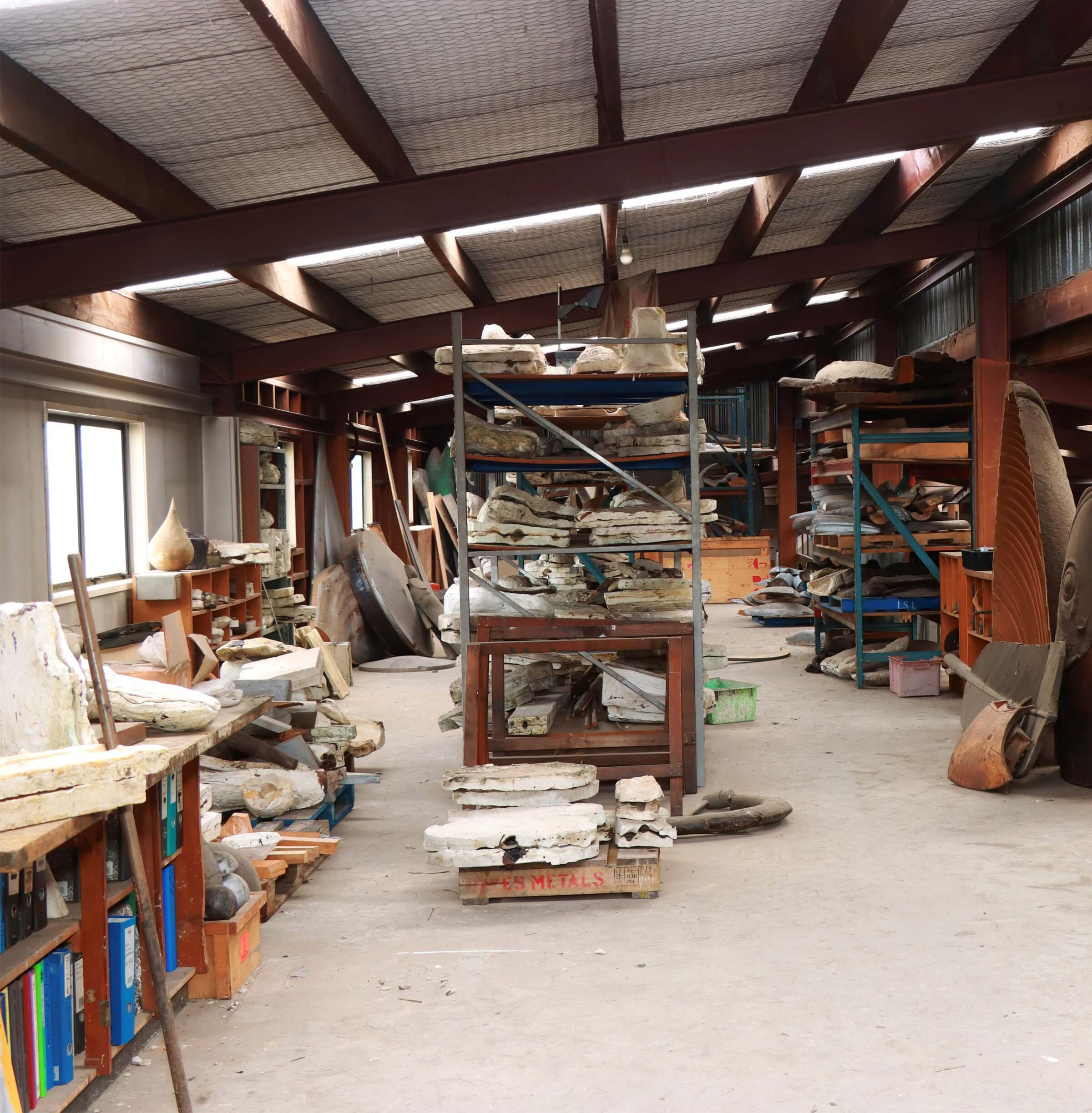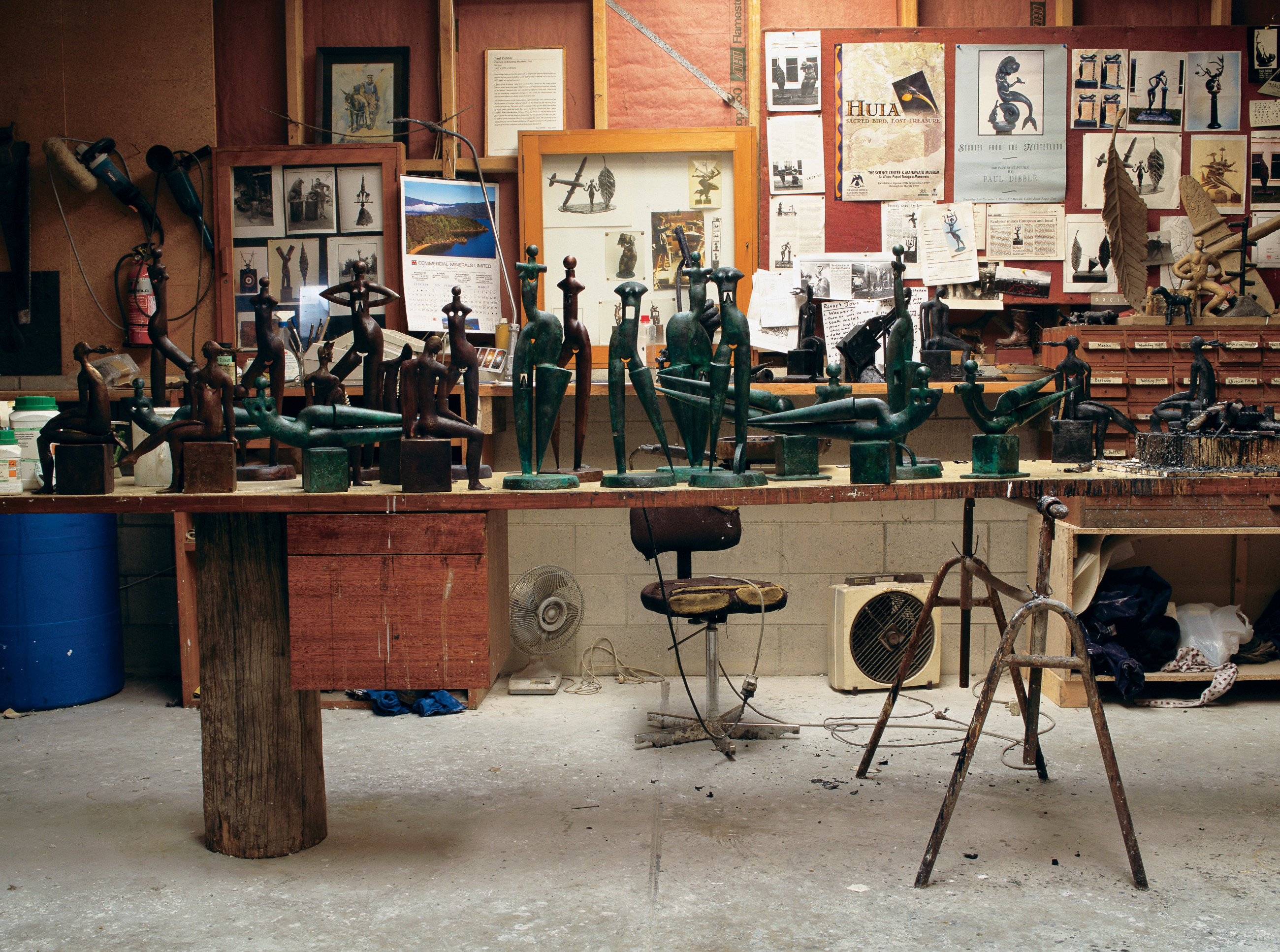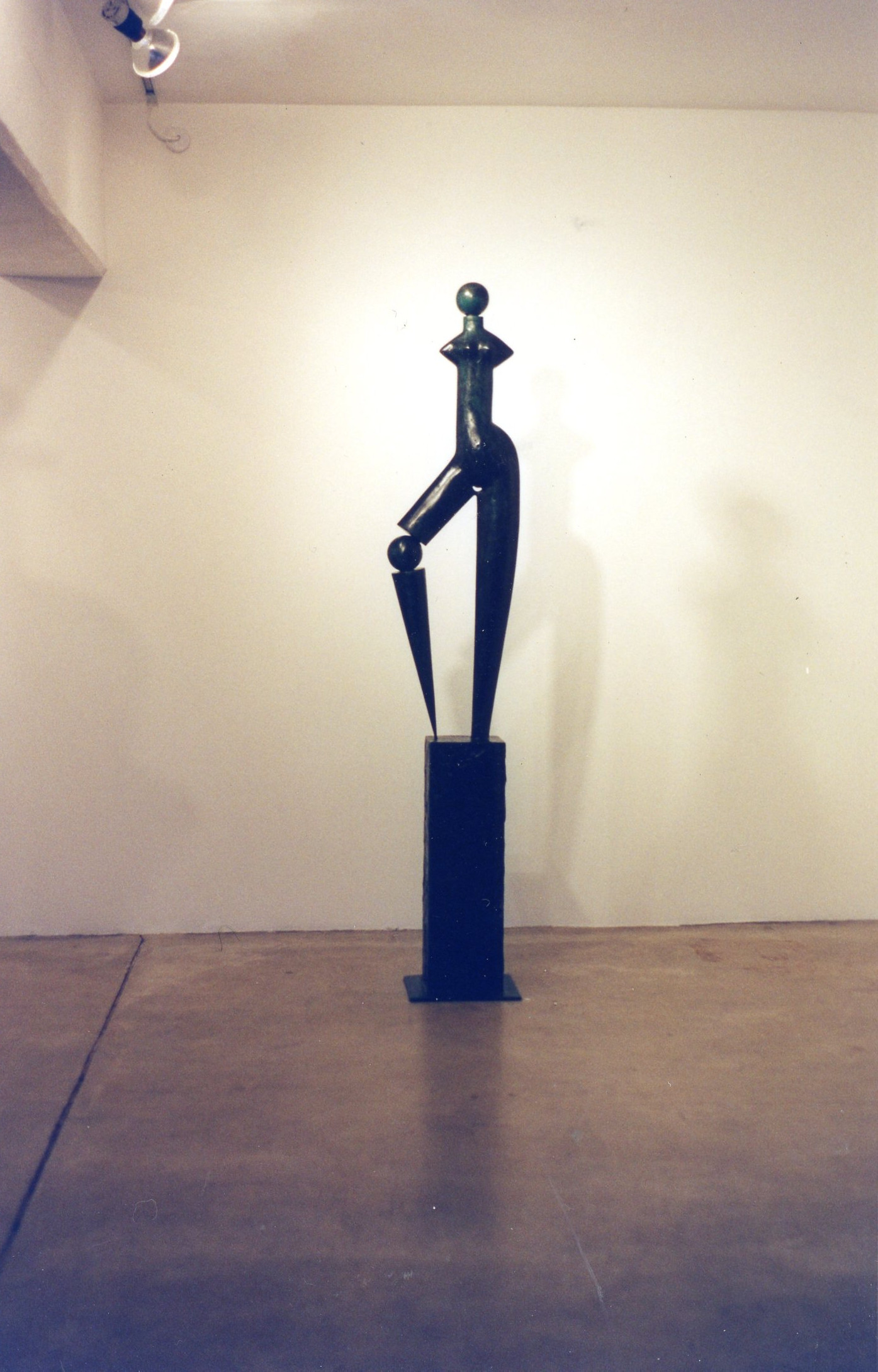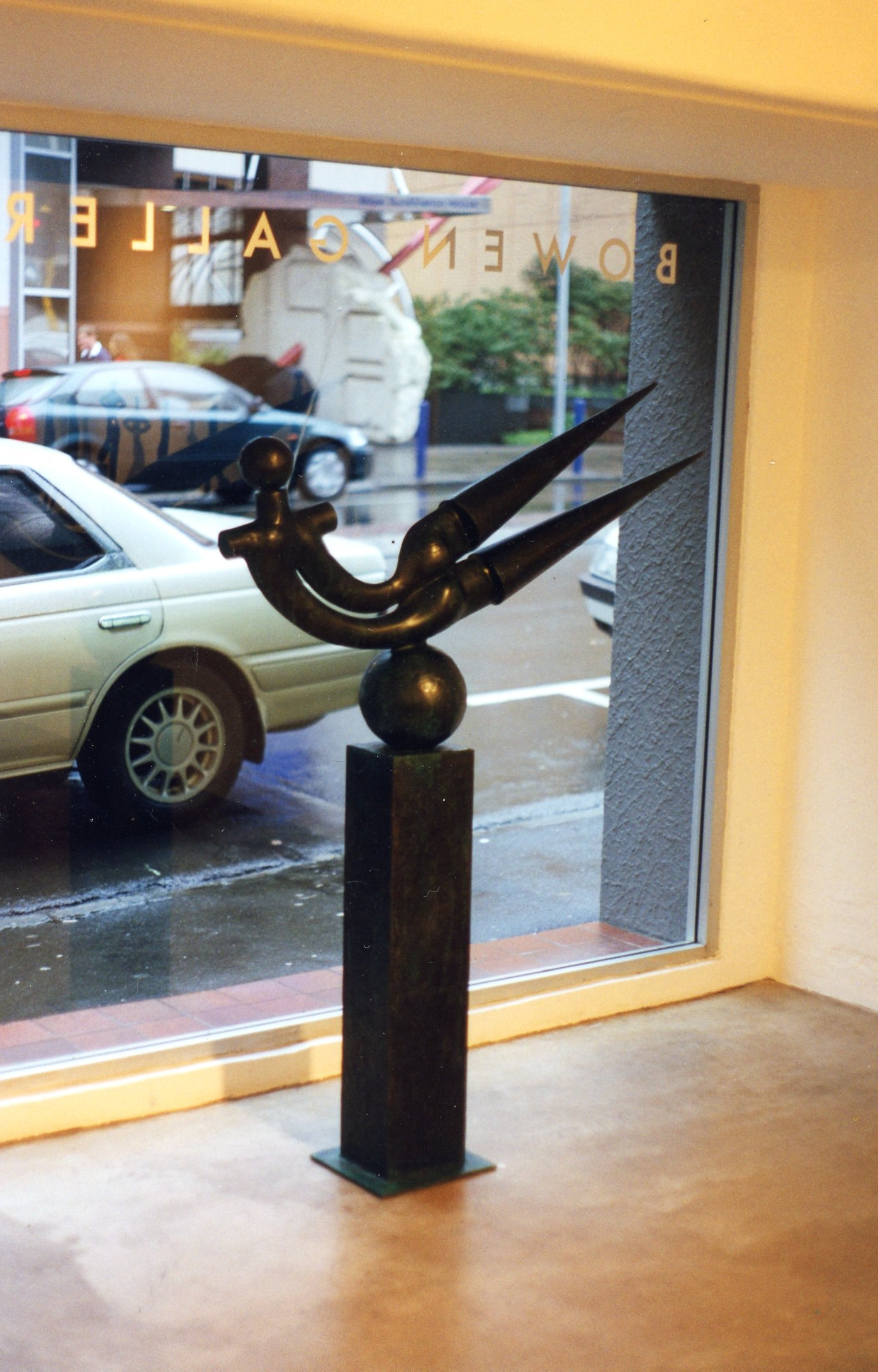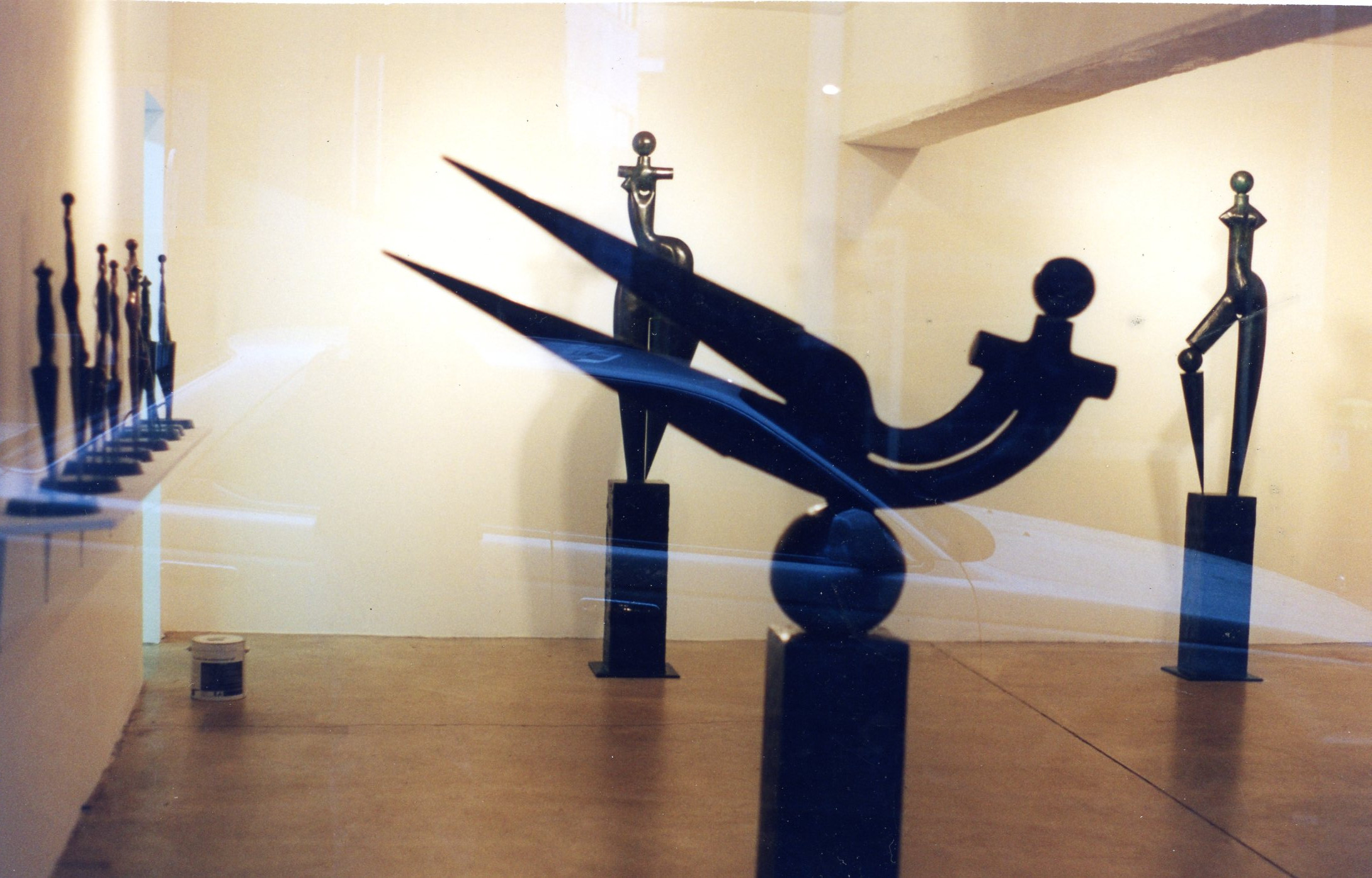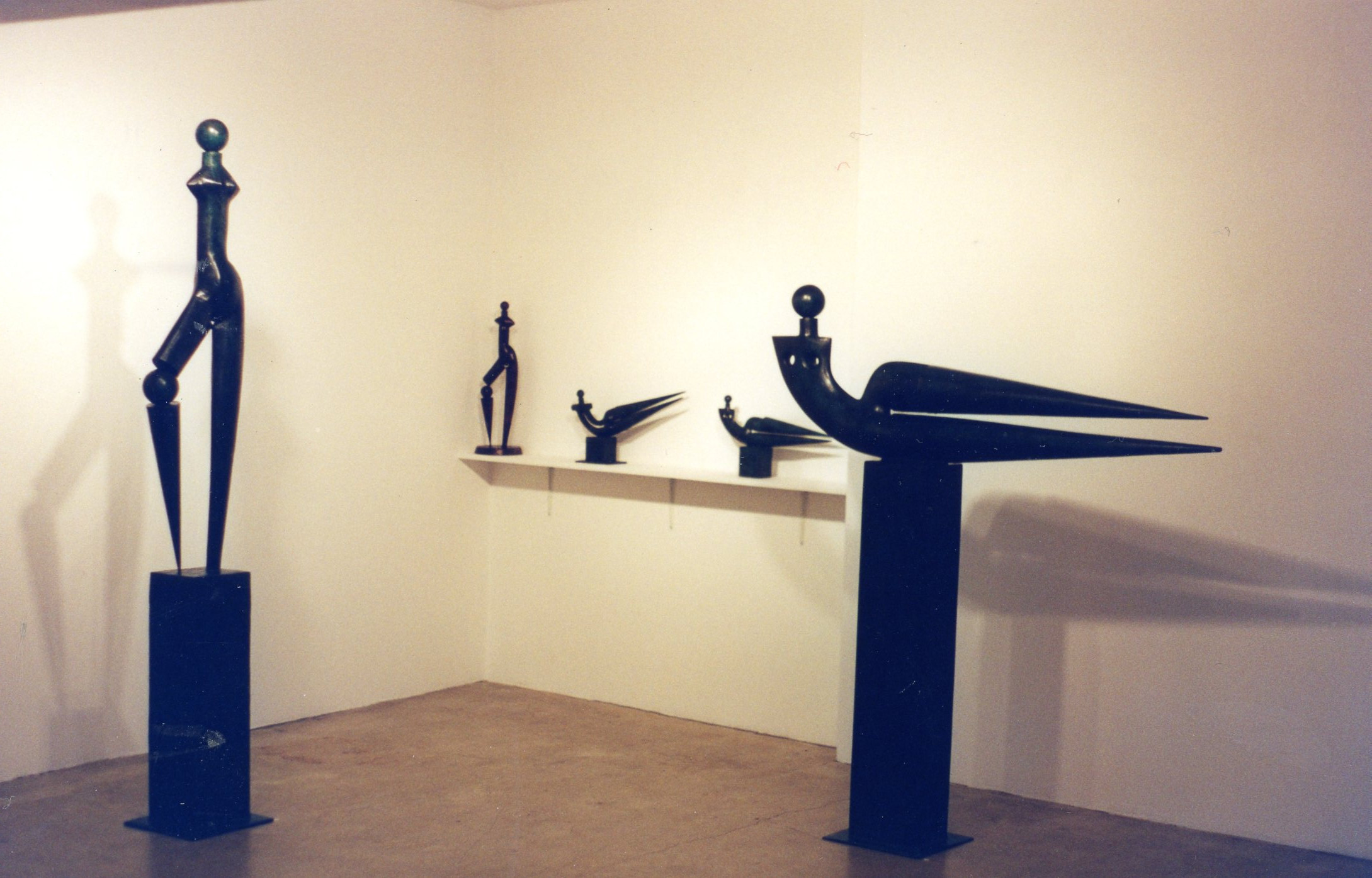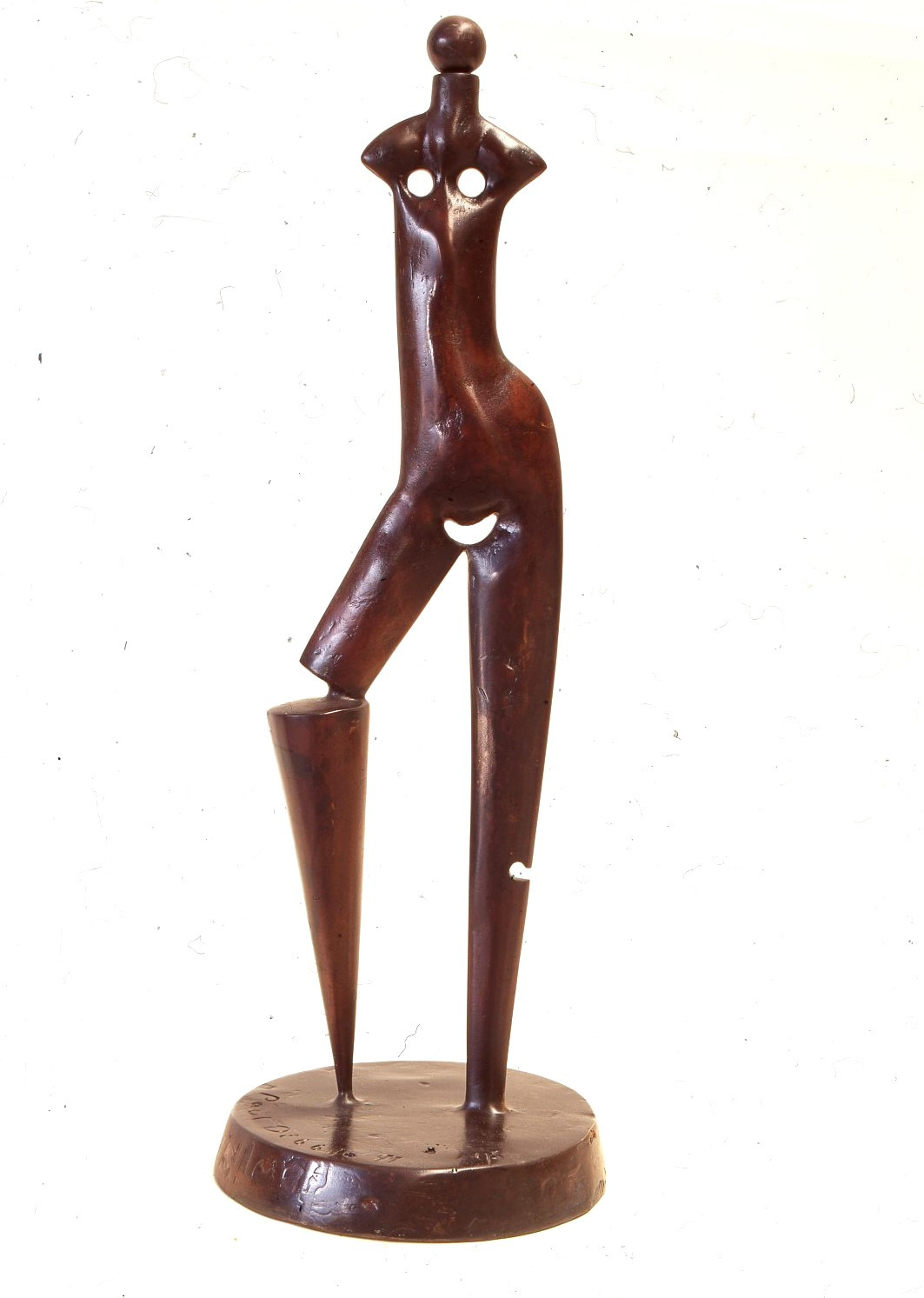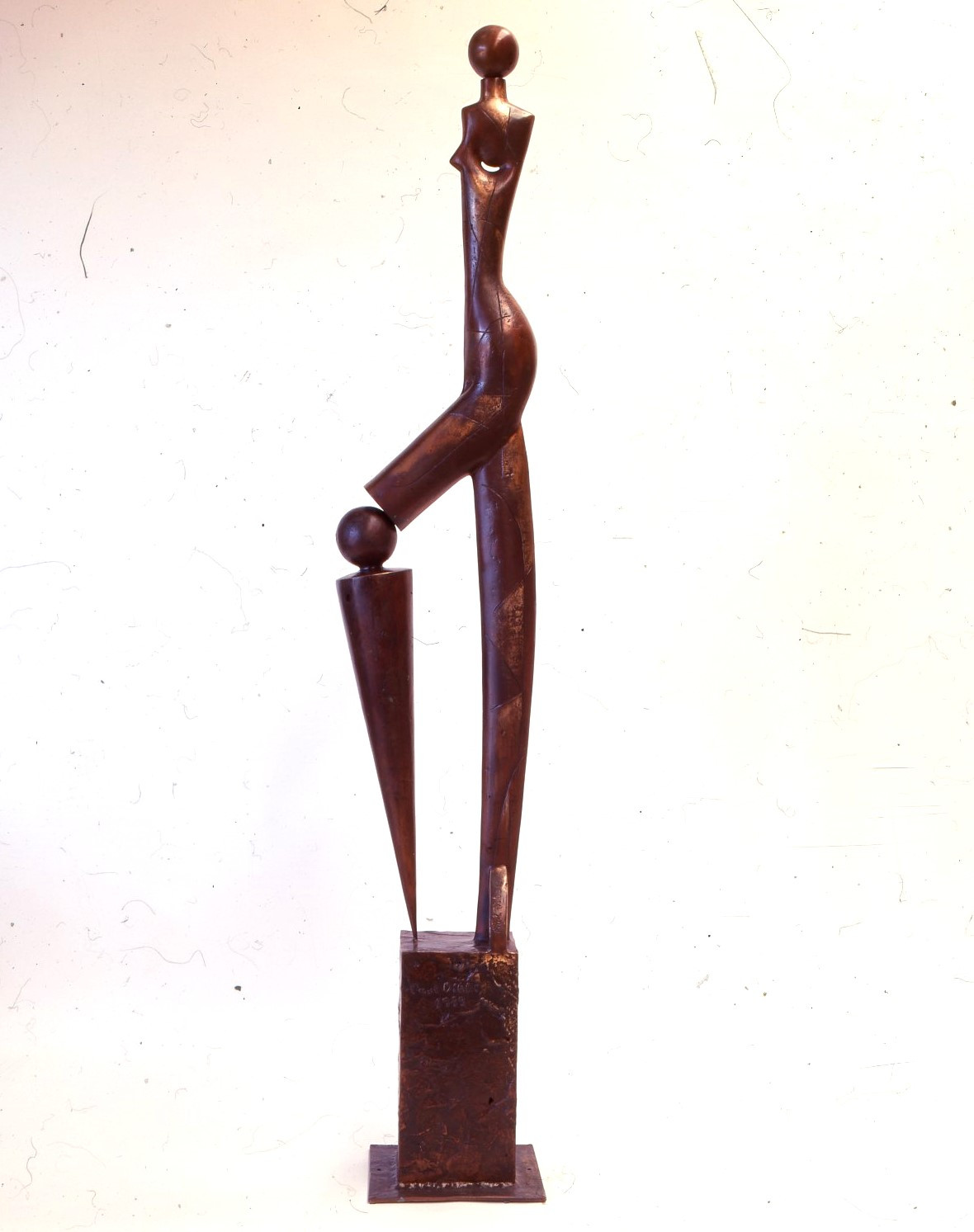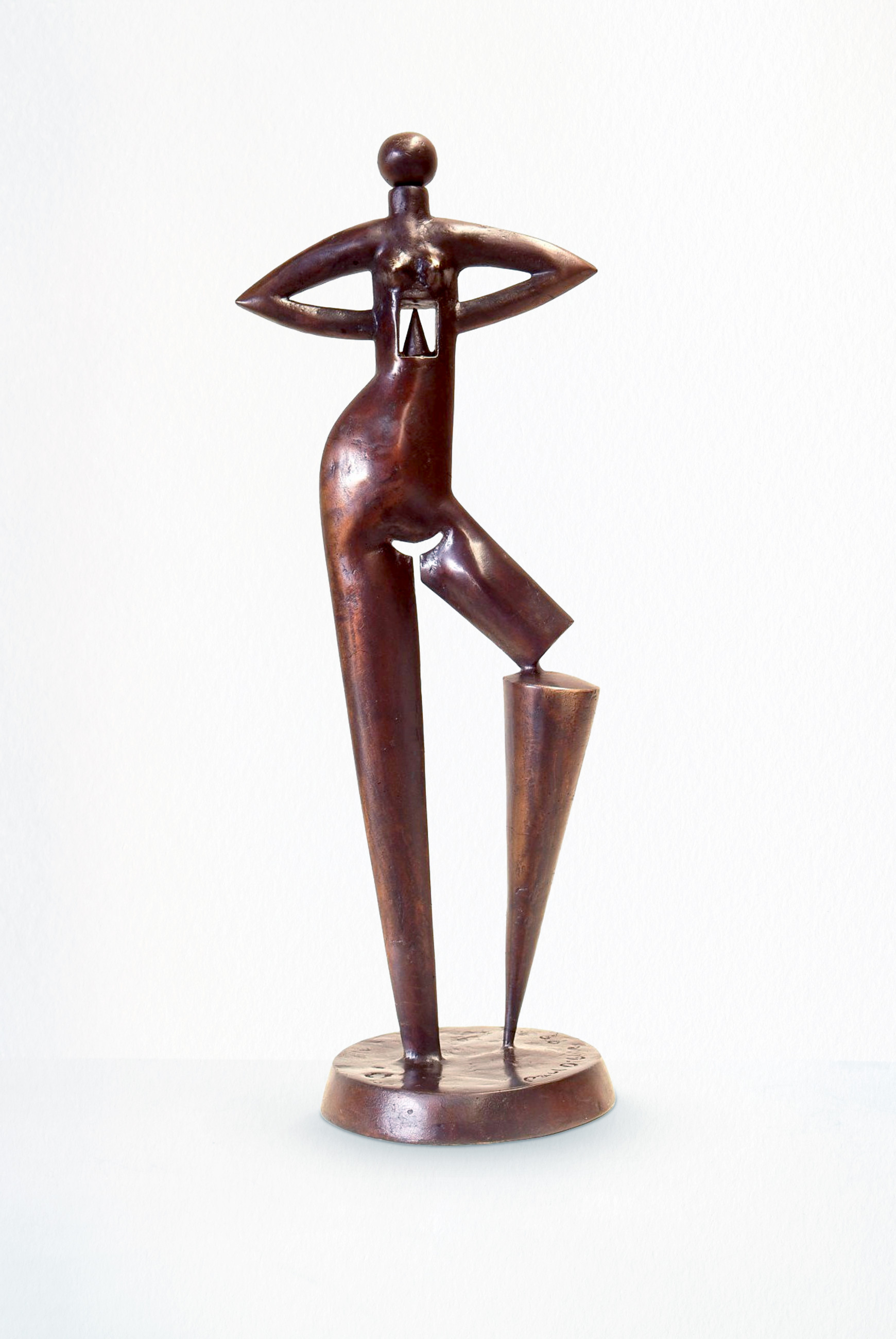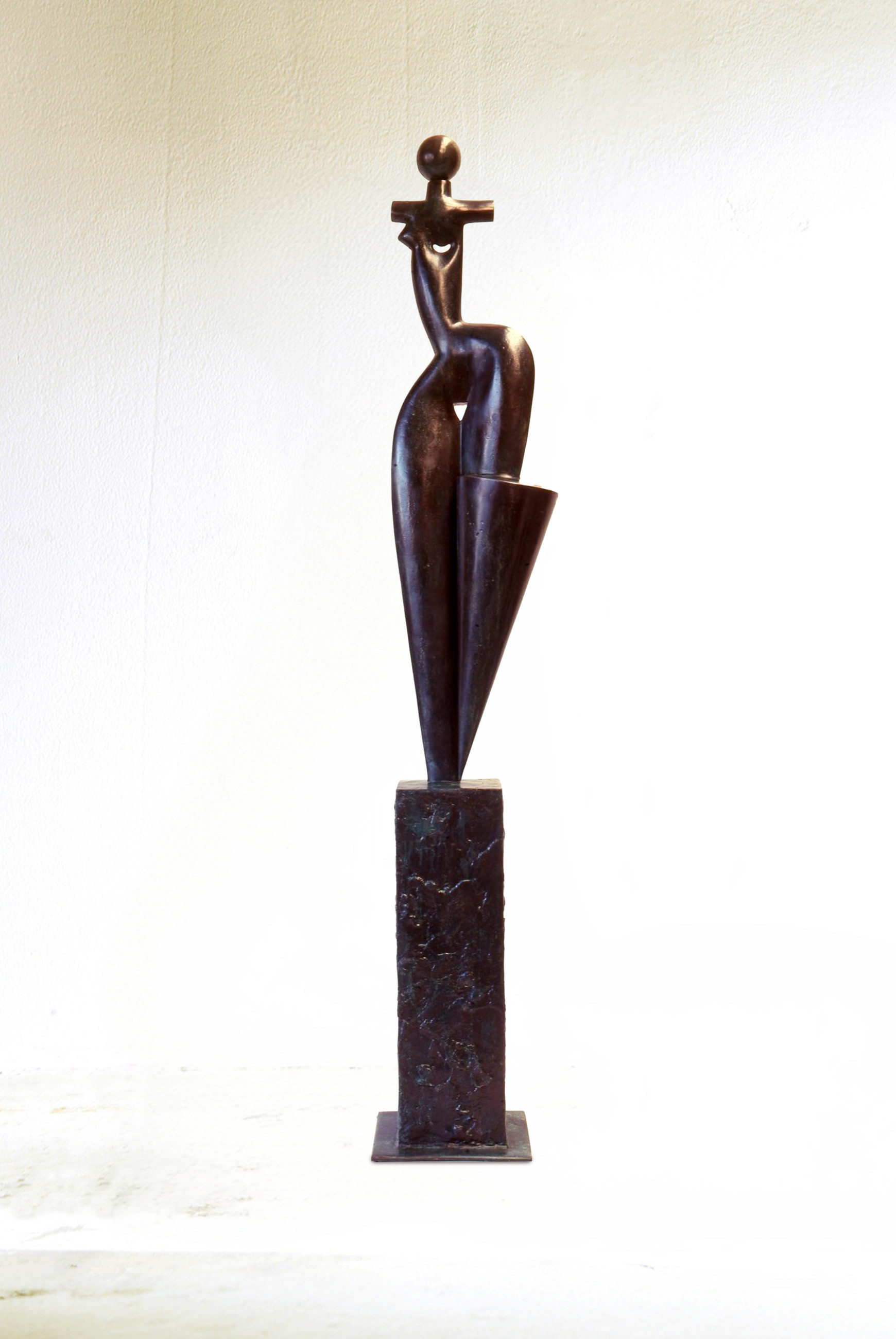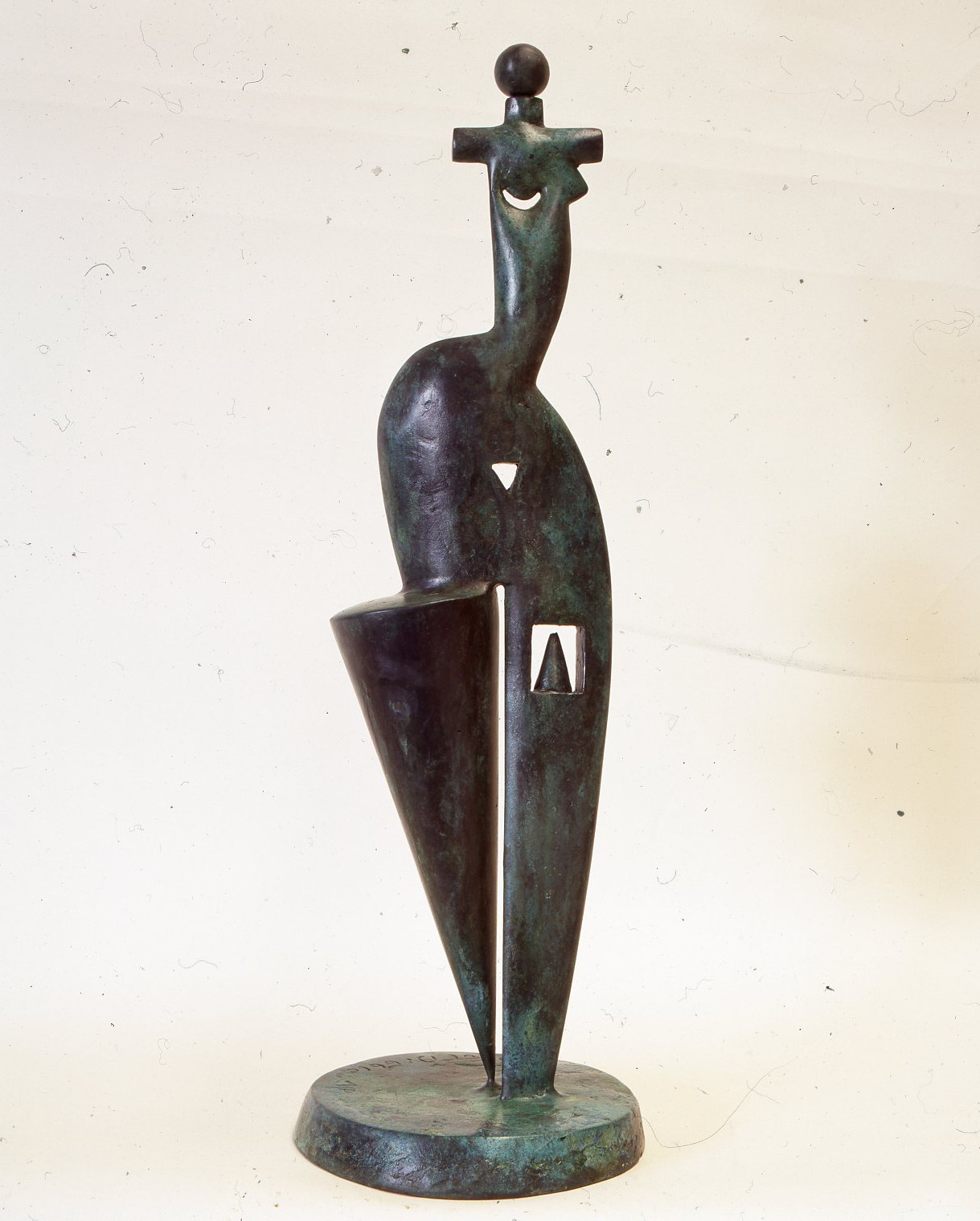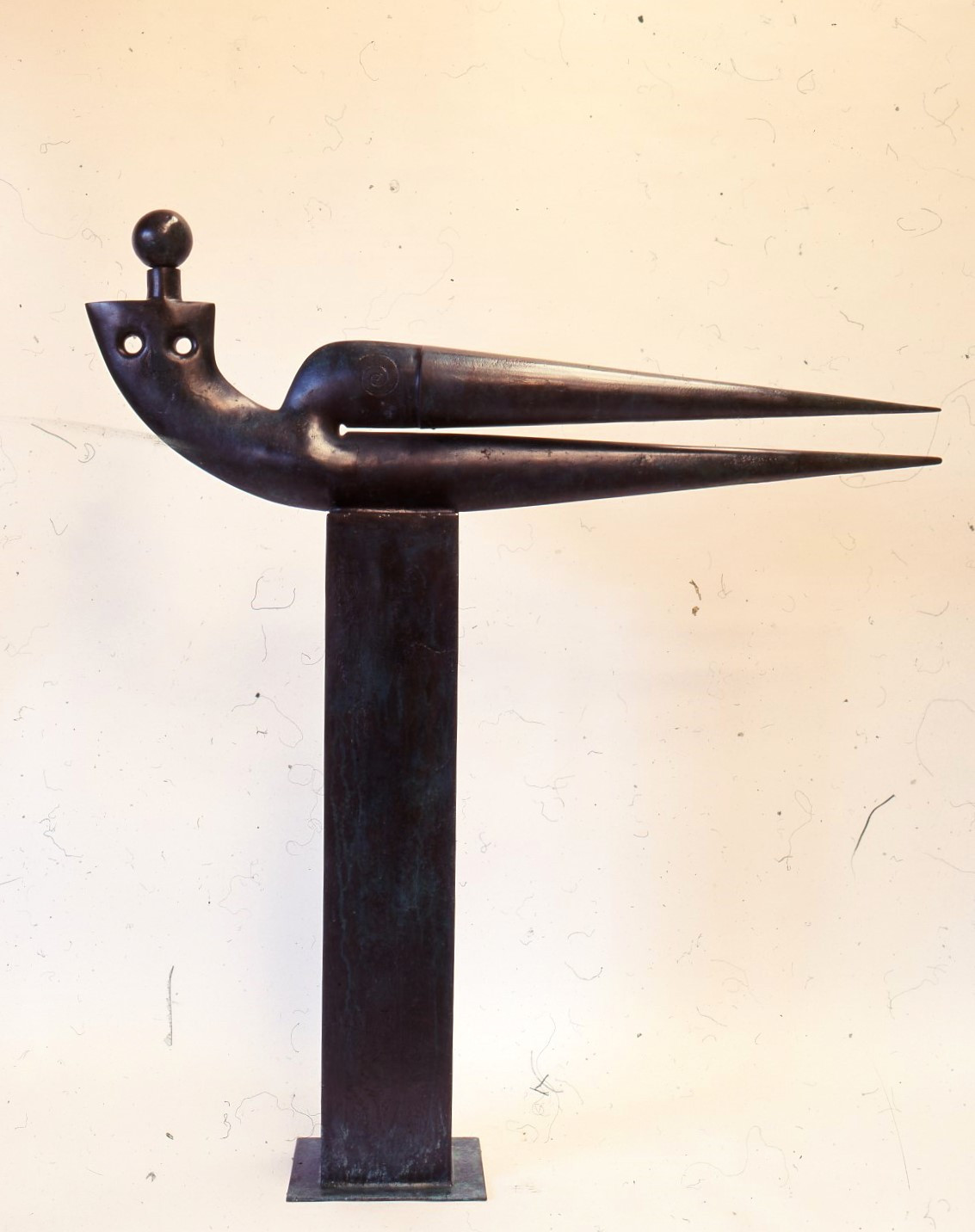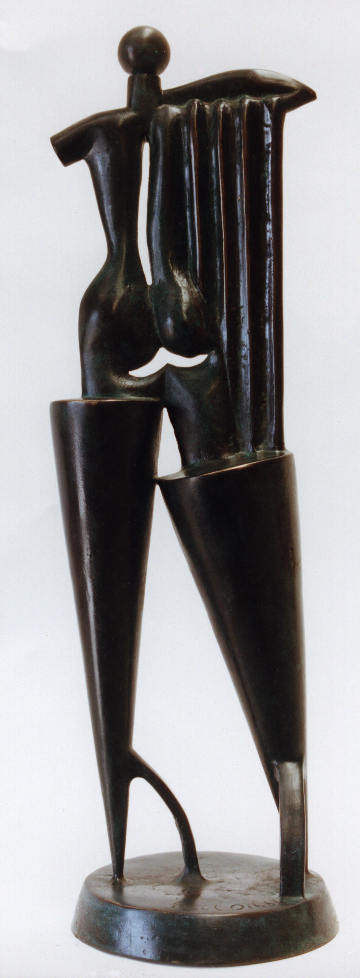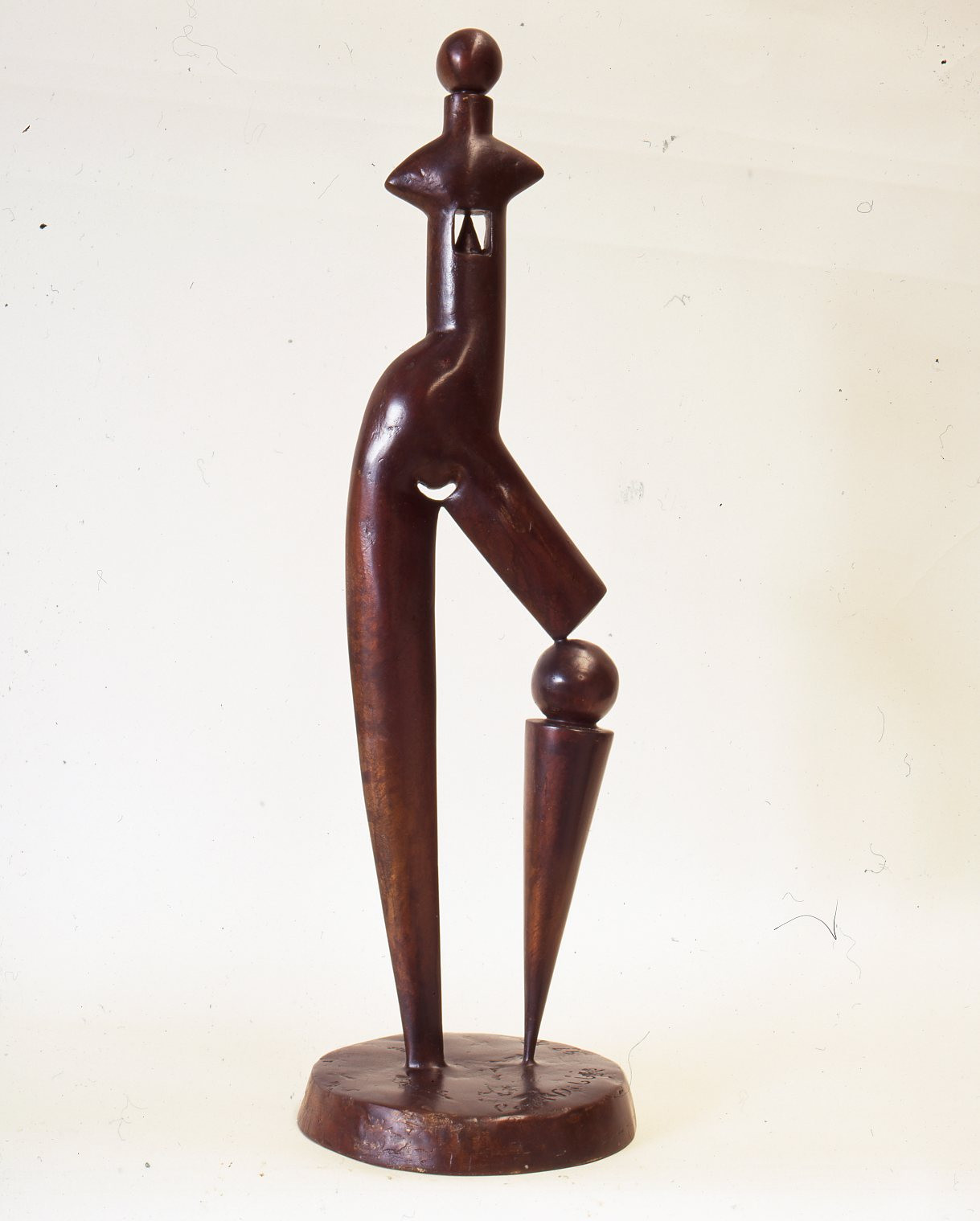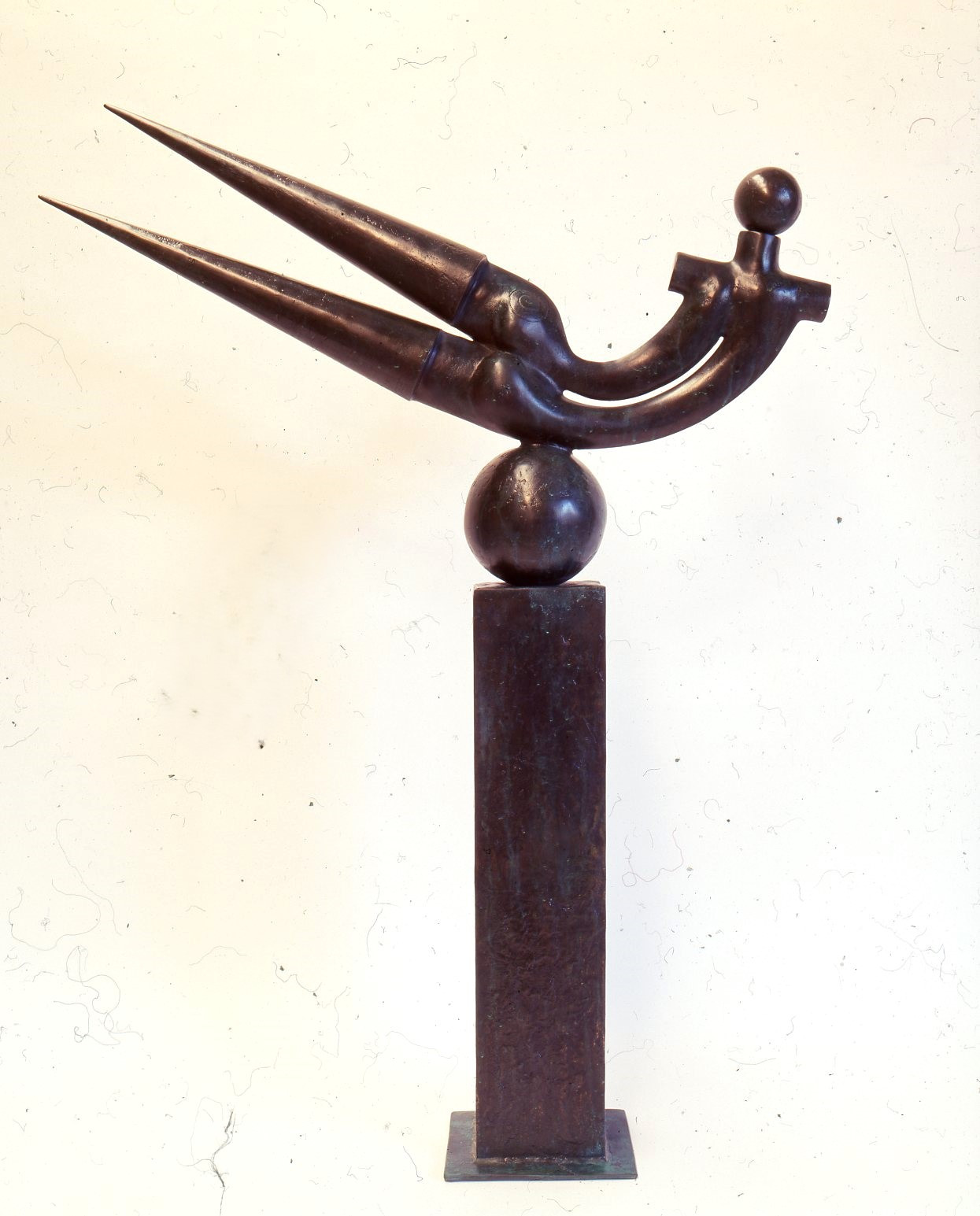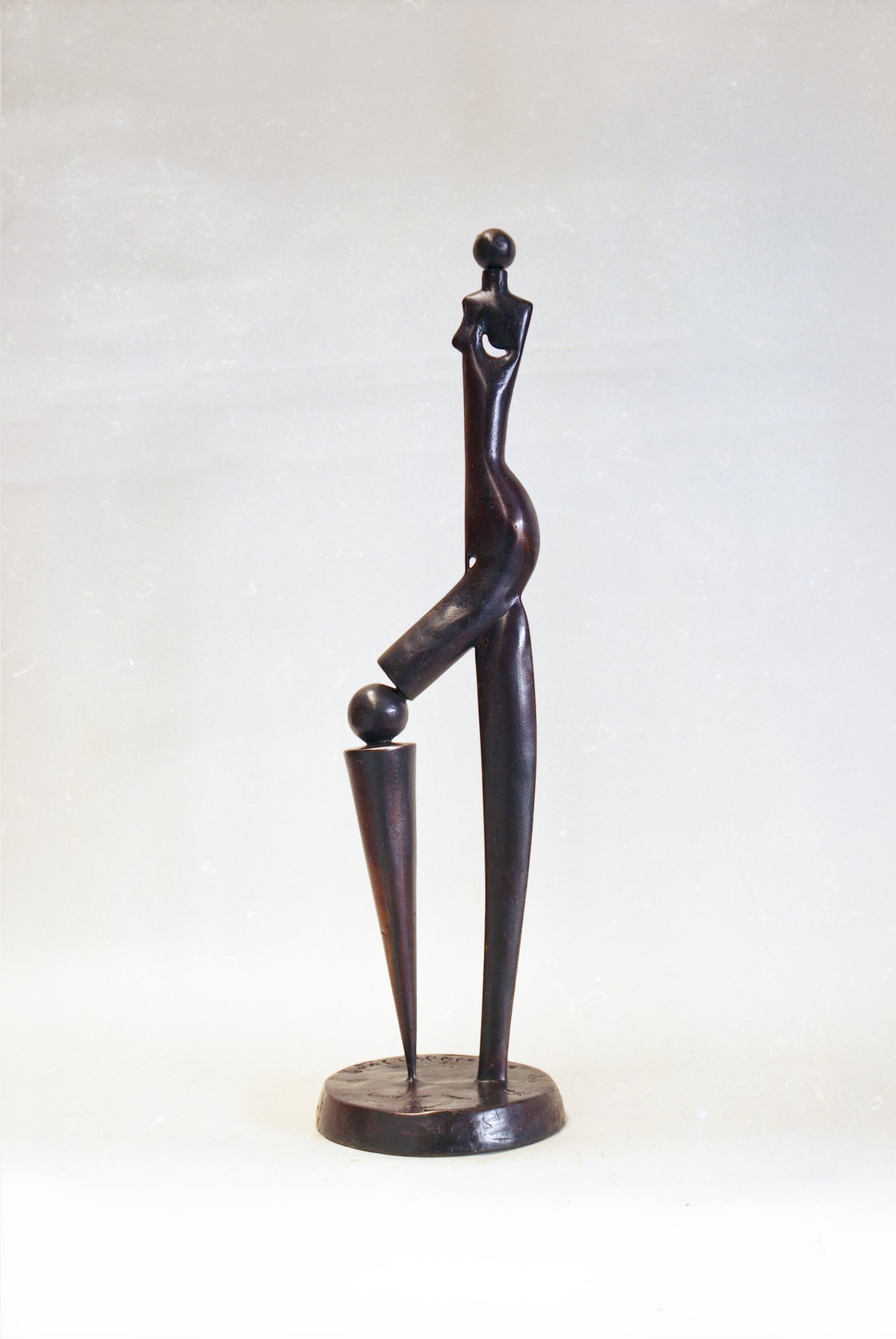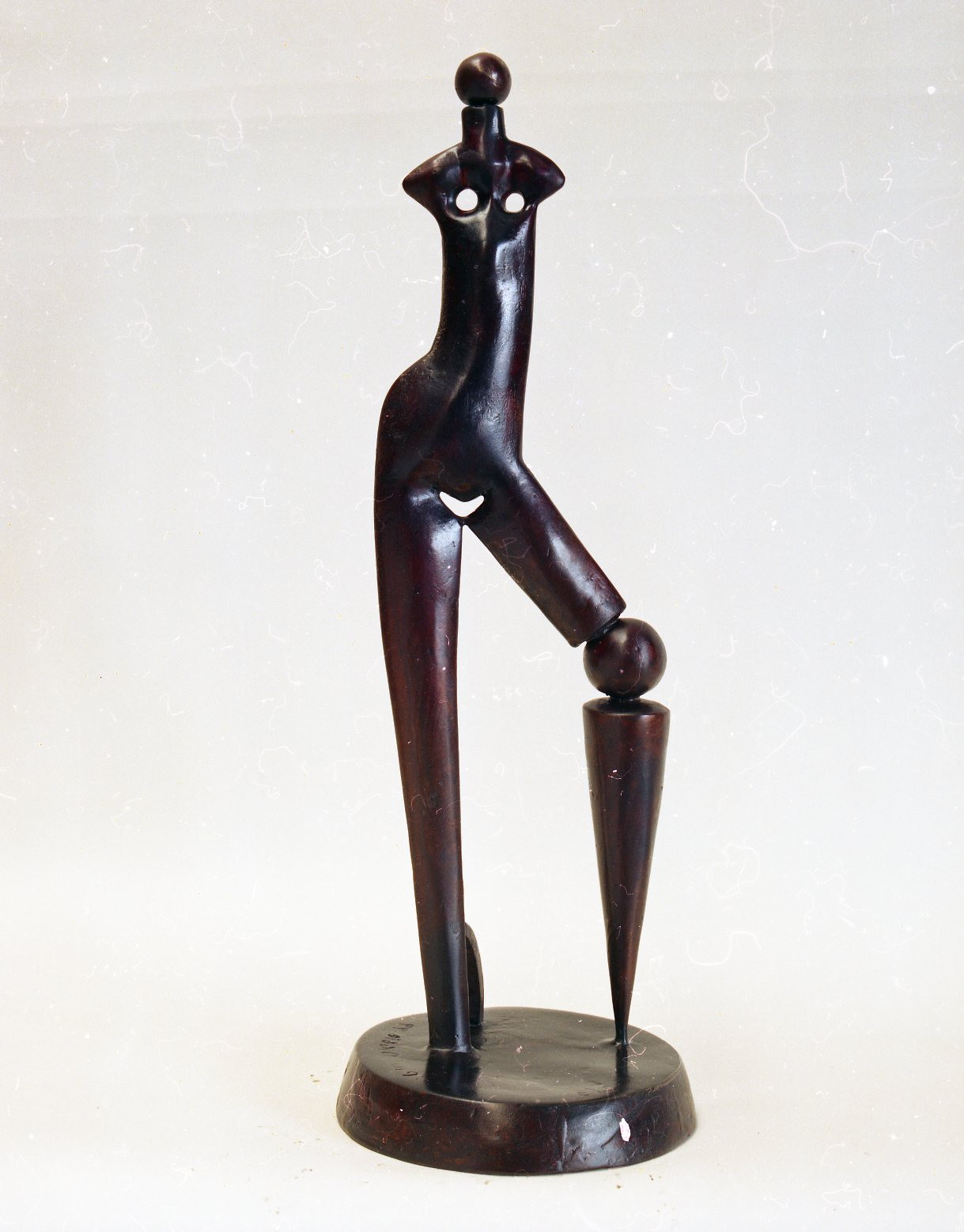May 2 - May 15, 1999 Revisiting Formalism: from the workshop
May 2 - May 15, 1999 Revisiting Formalism: from the workshopSolo, Bowen Galleries, Wellington
Text
Dibble has shown interest in figurative work with constant rendering of the human form, often in very different guises. In some periods this is seen in works of giant classical nudes, but poured with thin edges making them almost a parody of their European counterparts. Some works have figures reduced to realistic cartoon like figures of mermaids and farmers depicting childhood tales of provincial life. In the series often referred to as Dibble's 'Geometric Works' they are a study in formal aspects of aesthetics.
The geometric figures were first made by Dibble as a return to an interest in the aesthetics of pure forms. They were a move away from works which had used a more narrative basis of themes and underlying stories and reflections on current affairs and topical concerns. The geometric series were first seen in early 1998 at a show in Auckland, then exclusively formed an exhibition at the Bowen Gallery in 1999 titled "Revisiting Formalism: From the Workshop". The works are all figurative in content with the human form reduced to simple geometric shapes of cones for legs, spheres for heads etc. Some of the works have straight or bowed props seeming to support the shapes. The mathematical forms give the works a cool surreal elegance yet at the same time the figures are highly gestural reflecting a strong sense of humanity.
For example as written about the artwork 'The Second Daughter' produced by Dibble in 1999;
"......they underline the overall vulnerability of the figure. This is further emphasised by its softly rounded, childlike belly and the small spherical head, which rests only precariously on the slope of the shoulders. And yet the figure's overall size gives in it an air of cool confidence, even haughtiness."
Dorothea Pauli (written in 2000)
